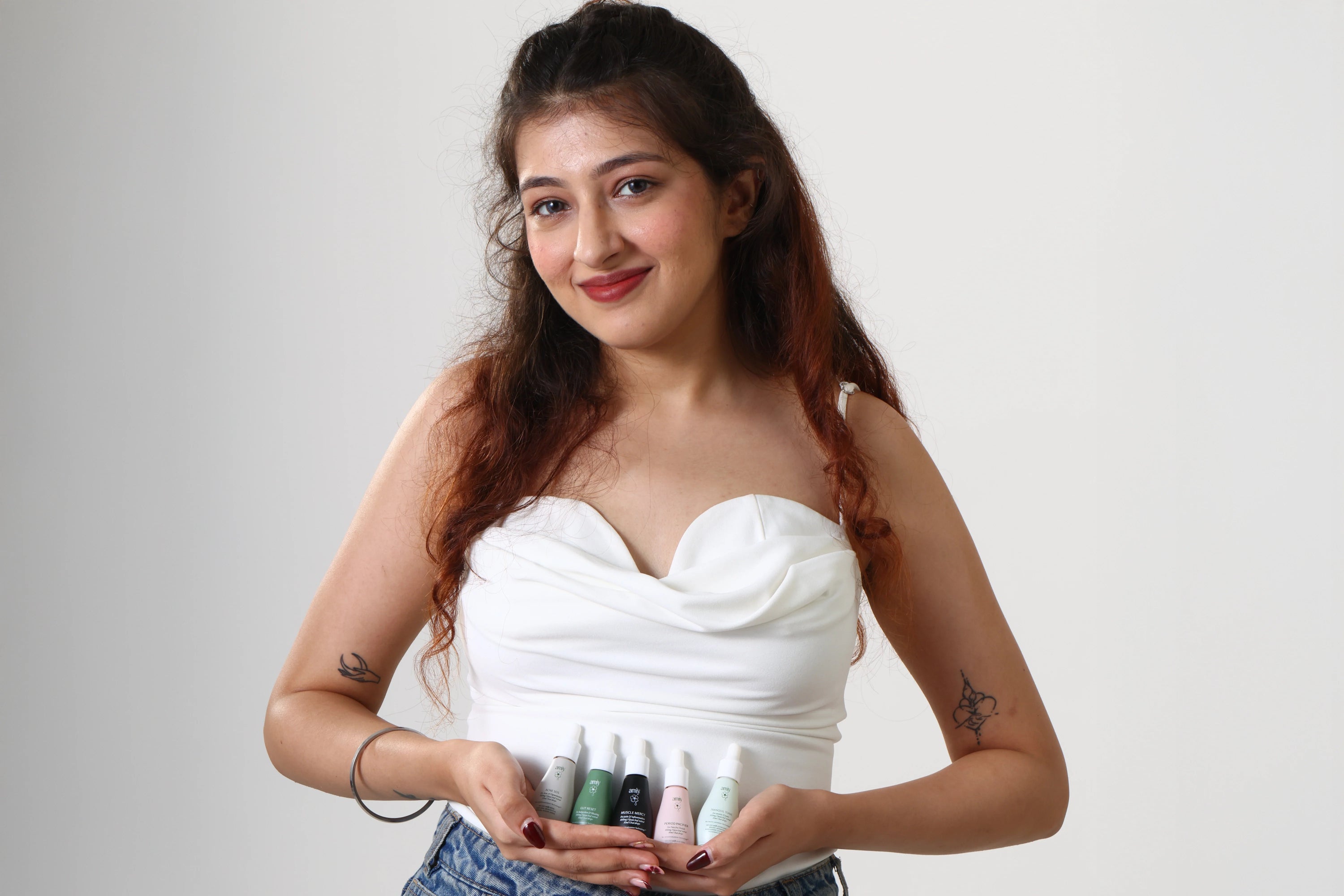





Rosacea skincare routine made simple—soothe facial flushing and strengthen a sensitive skin barrier with ceramides and calming steps.
Facial flushing, stinging, and visible tiny vessels can make skincare feel risky. A steady rosacea skincare routine helps by protecting your barrier, avoiding triggers, and choosing soothing ingredients like ceramides, centella, oat, and panthenol. Keep it simple, gentle, and consistent.
Rosacea is a long-term sensitivity pattern. The face may flush or stay red. You might notice warmth, tingling, and sometimes broken capillaries (tiny visible vessels).
Common triggers include heat, spicy food, stress, harsh products, or hot sun.
A calm routine reduces daily irritation so skin can settle.

Evenings focus on comfort and repair.
Apply a pea-size amount of the new product on the jawline or behind the ear for 24–48 hours. Increase use slowly.
If you feel burning beyond a mild tingle, wash off and pause.

Yes—small habits help.
Sip cool water, manage stress, and prefer shade outdoors.
Keep a trigger diary for 2–3 weeks noting food, weather, workouts, skincare, and stress to identify patterns.
Topicals won’t erase them. A calm routine may reduce background redness so vessels look less prominent.
For persistent visible vessels, dermatology procedures like laser treatment are commonly used.
Pre- and post-care still depend on gentle cleansing, moisturising, and strict sunscreen.
A clinician can confirm the rosacea type and guide prescription options if needed.
Amiy’s formulations focus on barrier strength and skin comfort.
Our Bio-Neuromodulation™ concept supports balanced nerve communication in reactive skin.
Complex Plant Elixir™ blends soothing botanicals that may help reduce day-to-day discomfort.
We favour fewer, calmer steps over aggressive actives (educational intent only).
Related reads
Hyperpigmentation Around Mouth: Simple Dark Spot Treatment - amiy naturals
Cystic acne treatment: calm deep, painful pimples safely | Amiy Naturals
This content is for educational purposes only and is not a substitute for professional medical advice. Please consult a qualified healthcare provider for personal care.
A1: A fragrance-free, low-foam gel or milk. Short contact, lukewarm water, and no scrubs. If skin feels tight after cleansing, switch to a gentler option or do a rinse-only morning.
A2: Yes. A stronger barrier often feels less irritated, so redness may look calmer over time.
A3: Many prefer mineral filters (zinc oxide, titanium dioxide). Choose SPF 30+ with a soft, moisturising base.
A4: Possibly—very slowly. Start with low-strength, buffer with moisturiser, and patch test. If stinging lasts beyond a few minutes, pause.
A5: No cream can remove visible vessels. A gentle routine may reduce background redness. Persistent vessels often require in-clinic treatments.
A6: Keep a 2–3 week diary of food, weather, exercise, skincare, and stress. Note flush events and adjust based on patterns.
If redness and sensitivity make daily care difficult, start with the basics—cleanse softly, moisturise with ceramides, and use SPF consistently. For added comfort, consider Amiy’s soothing blends that support barrier health and calmer skin.